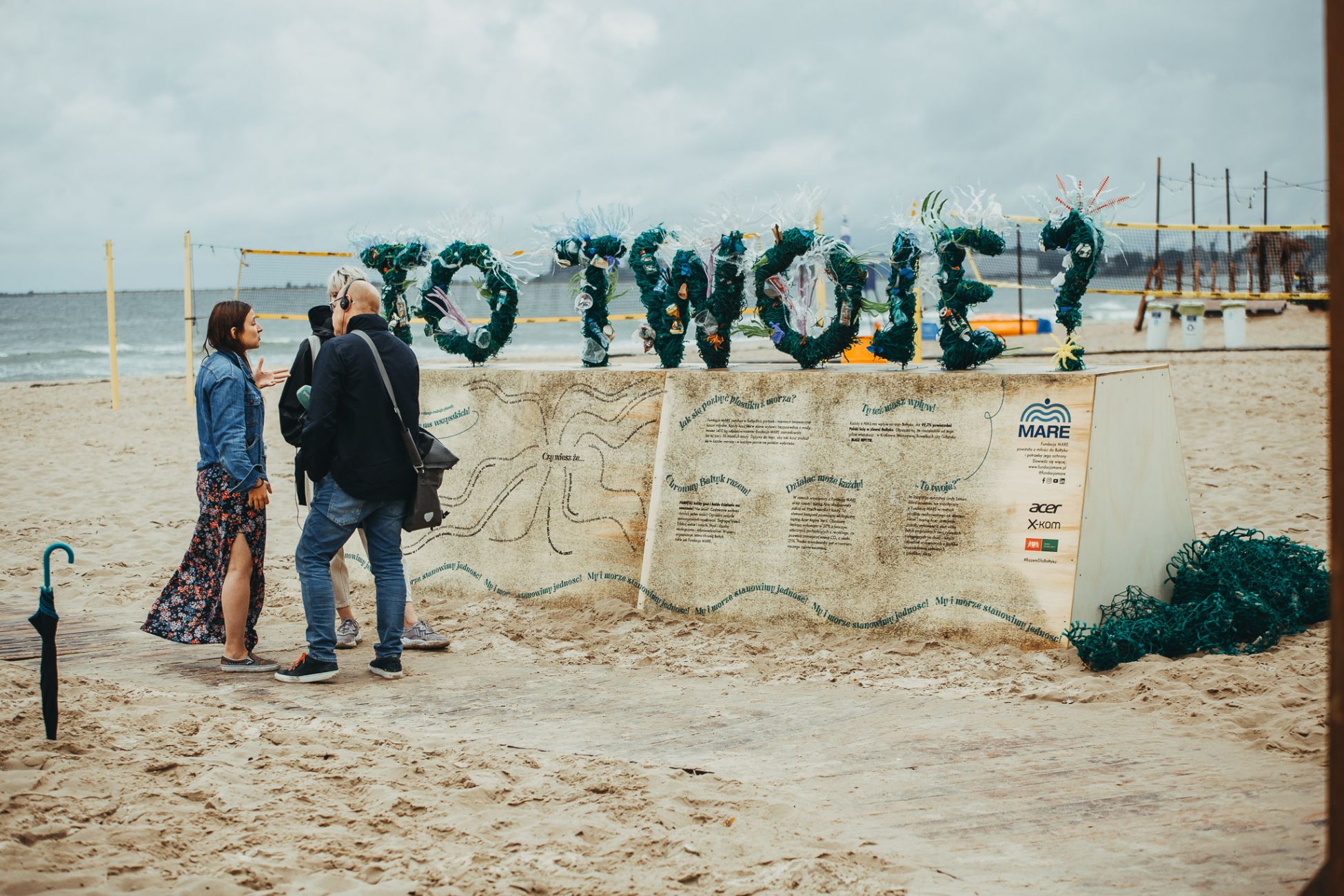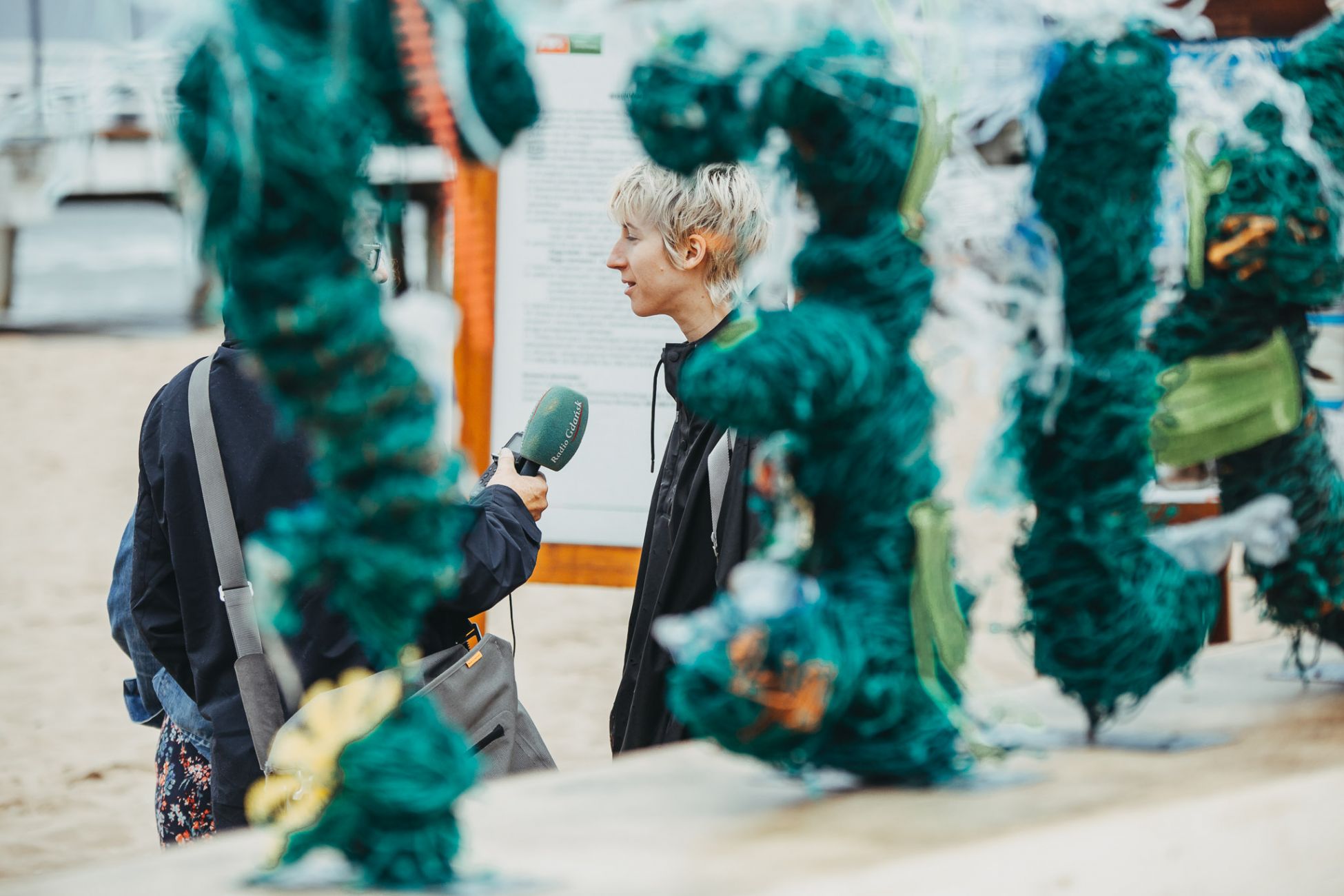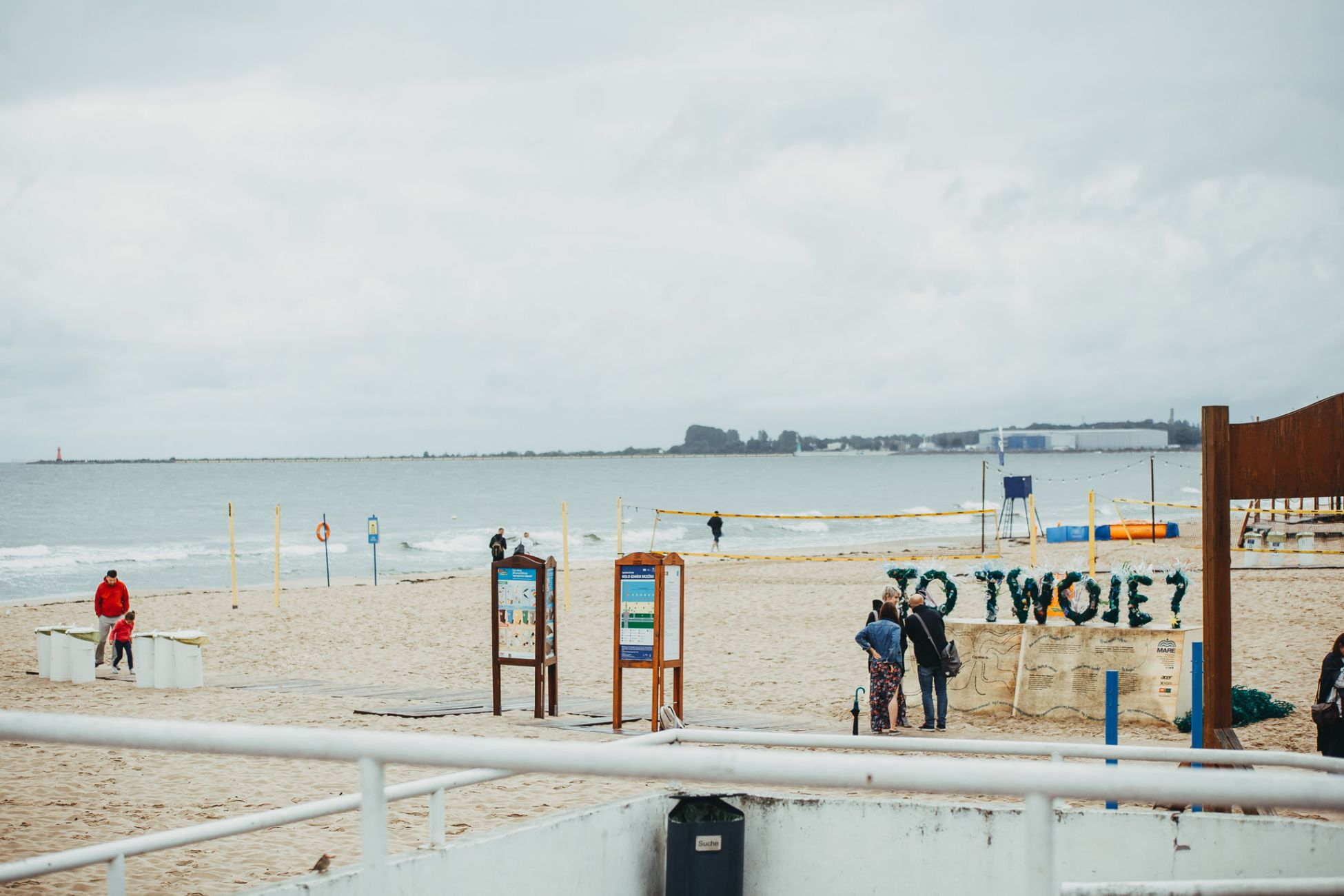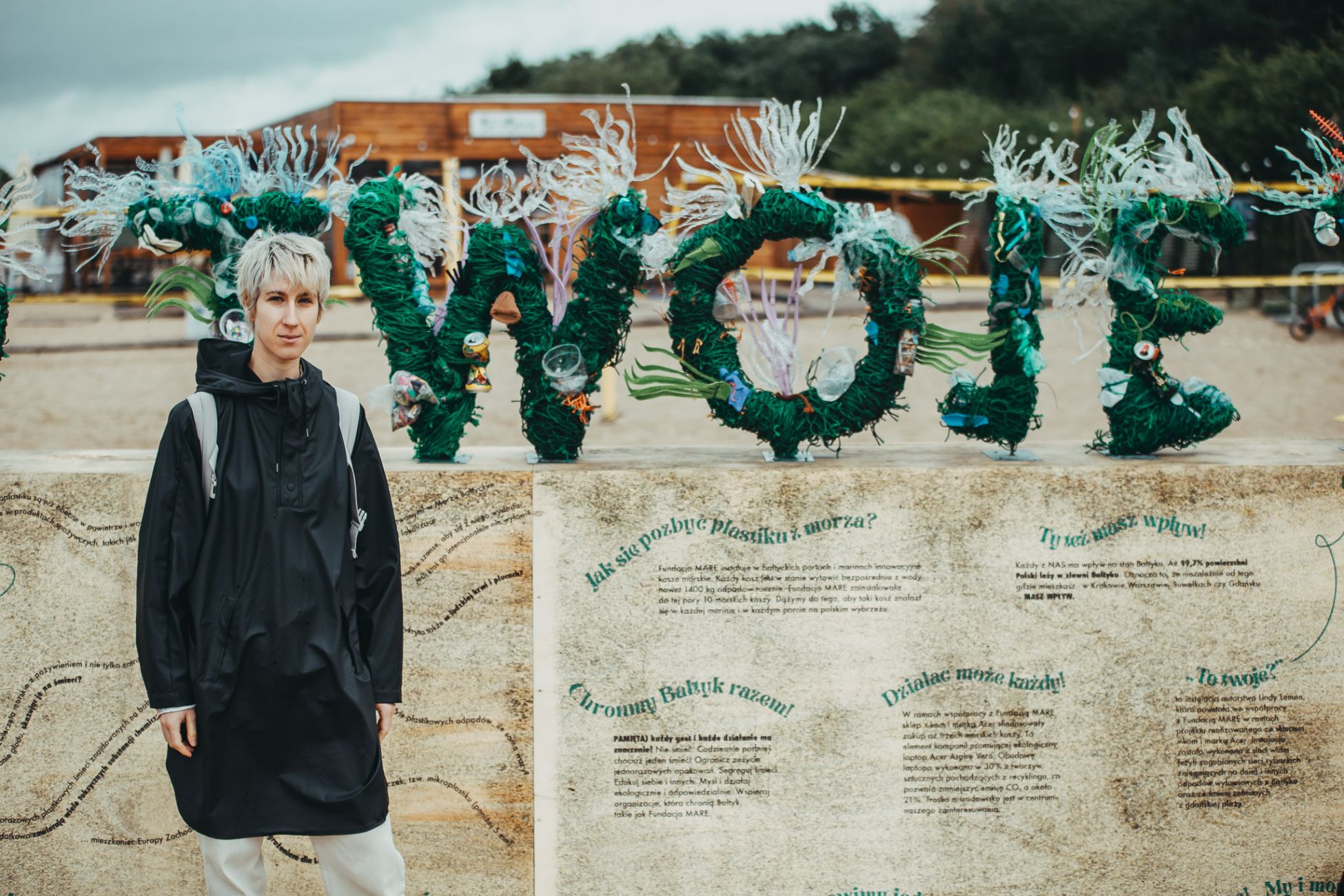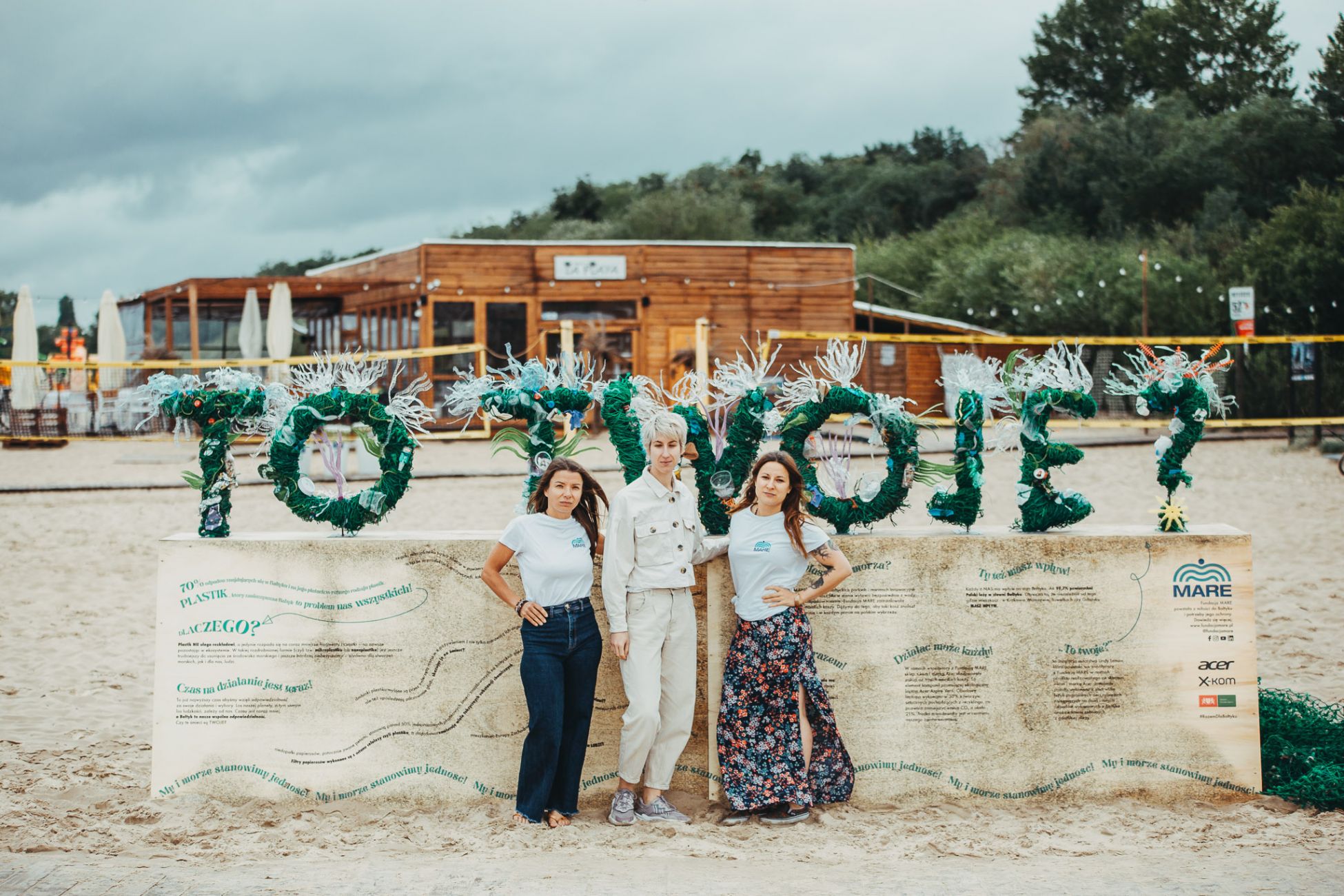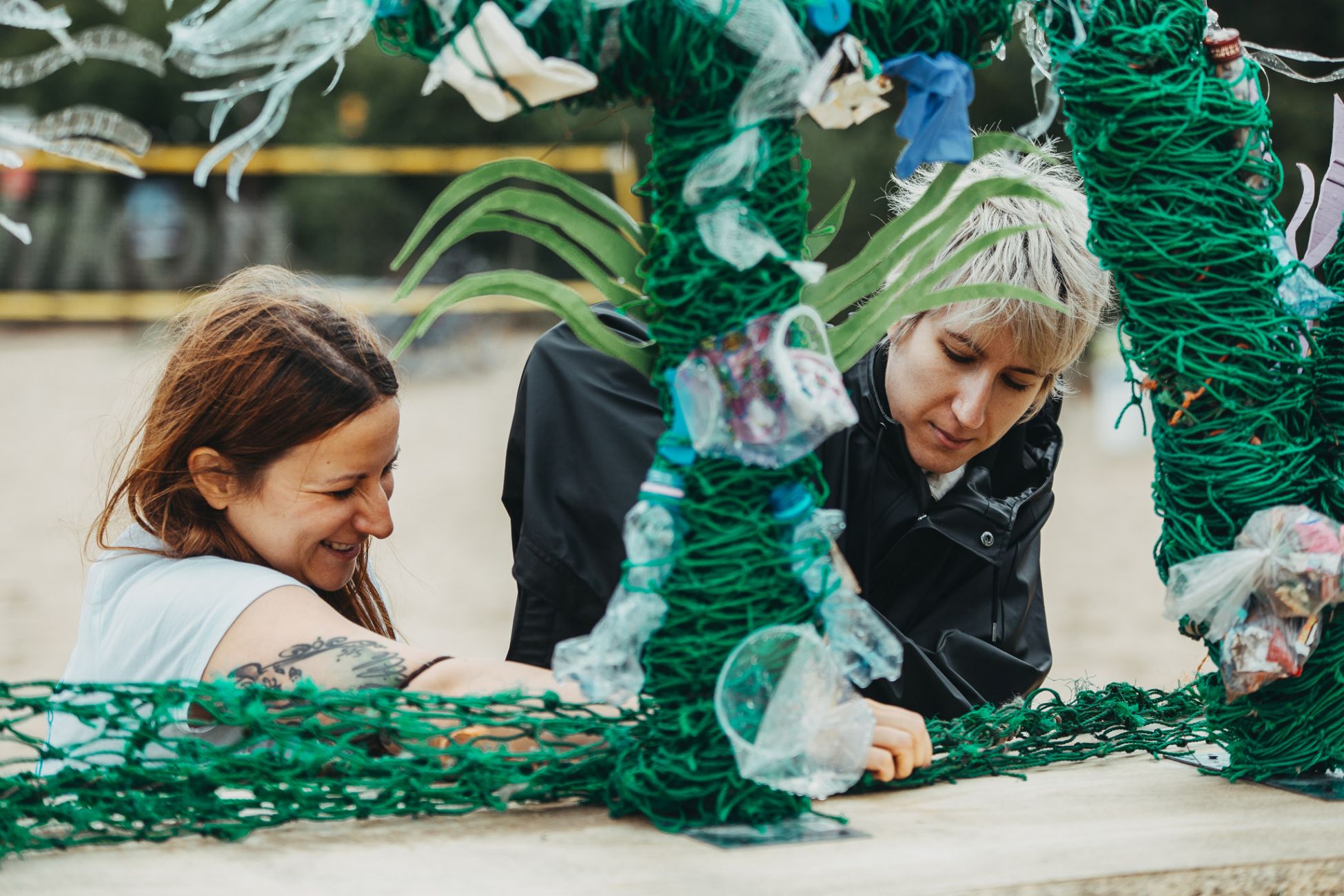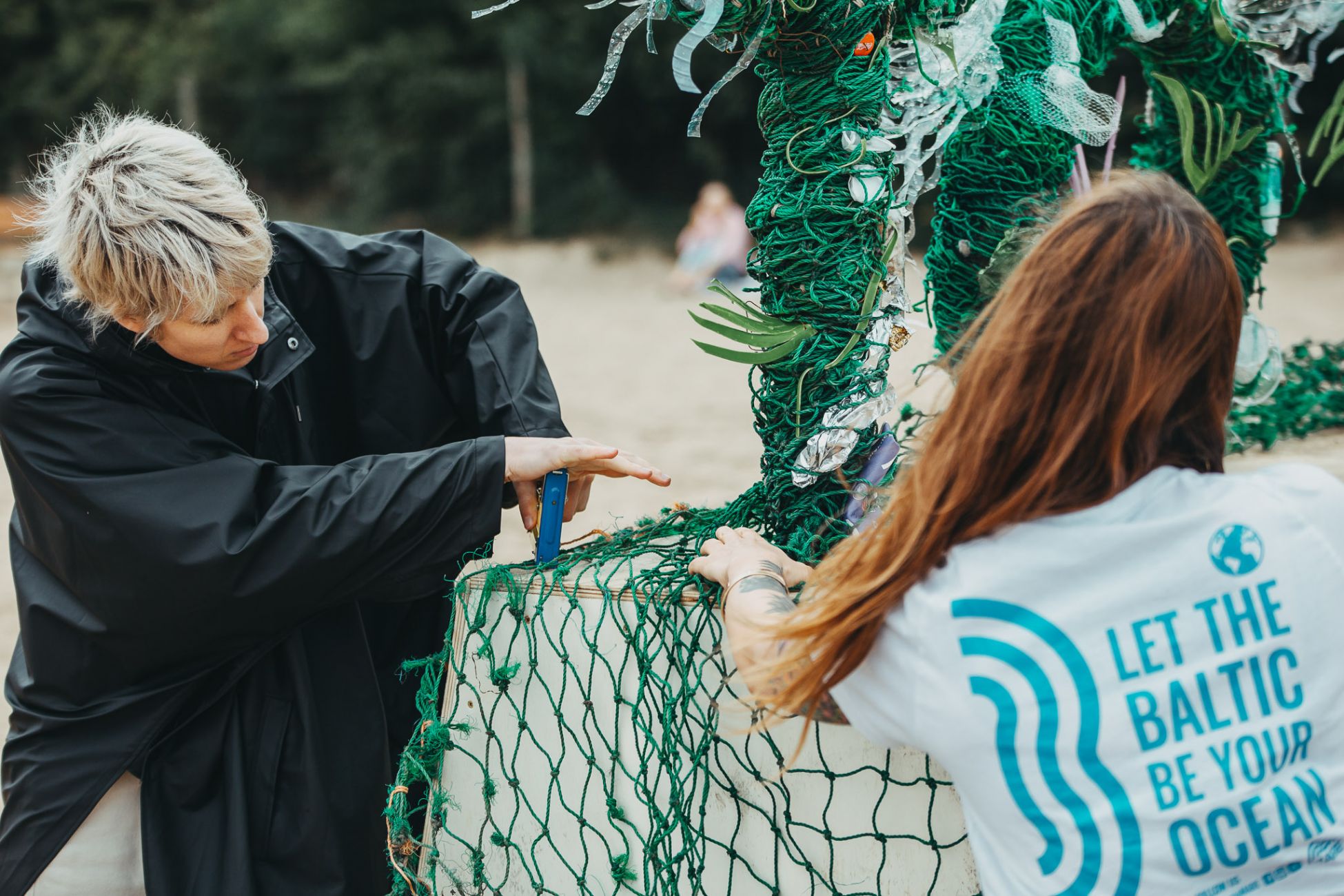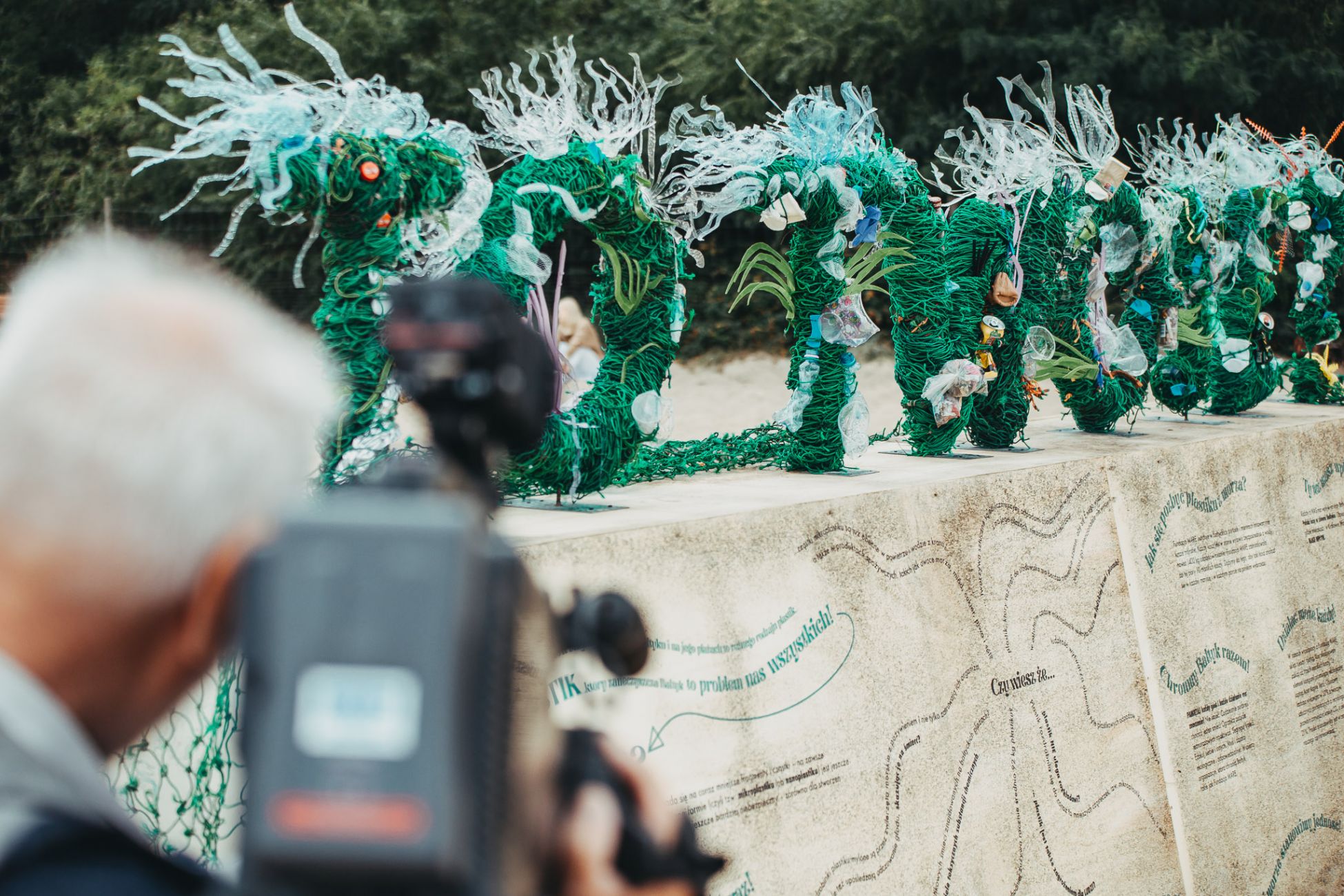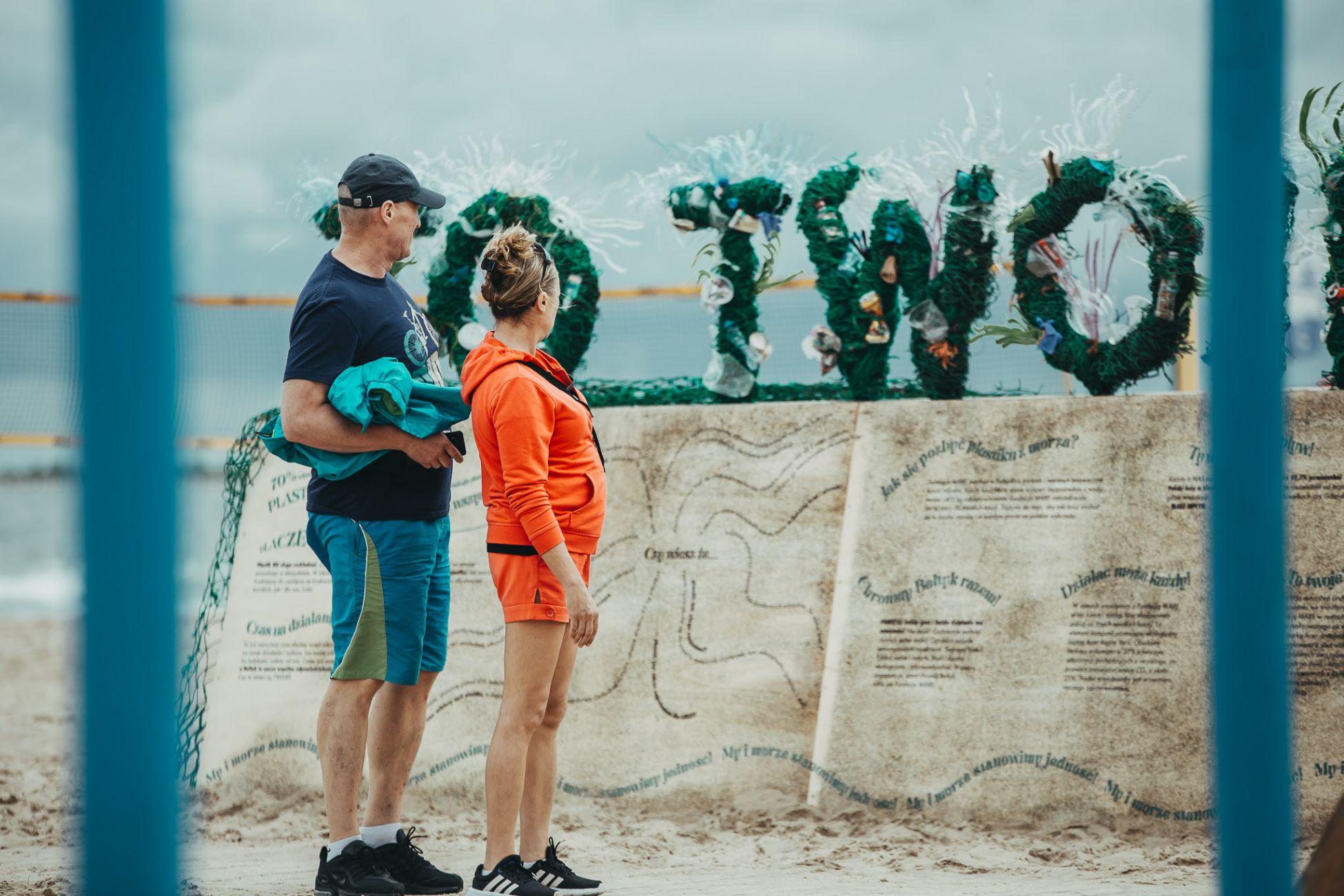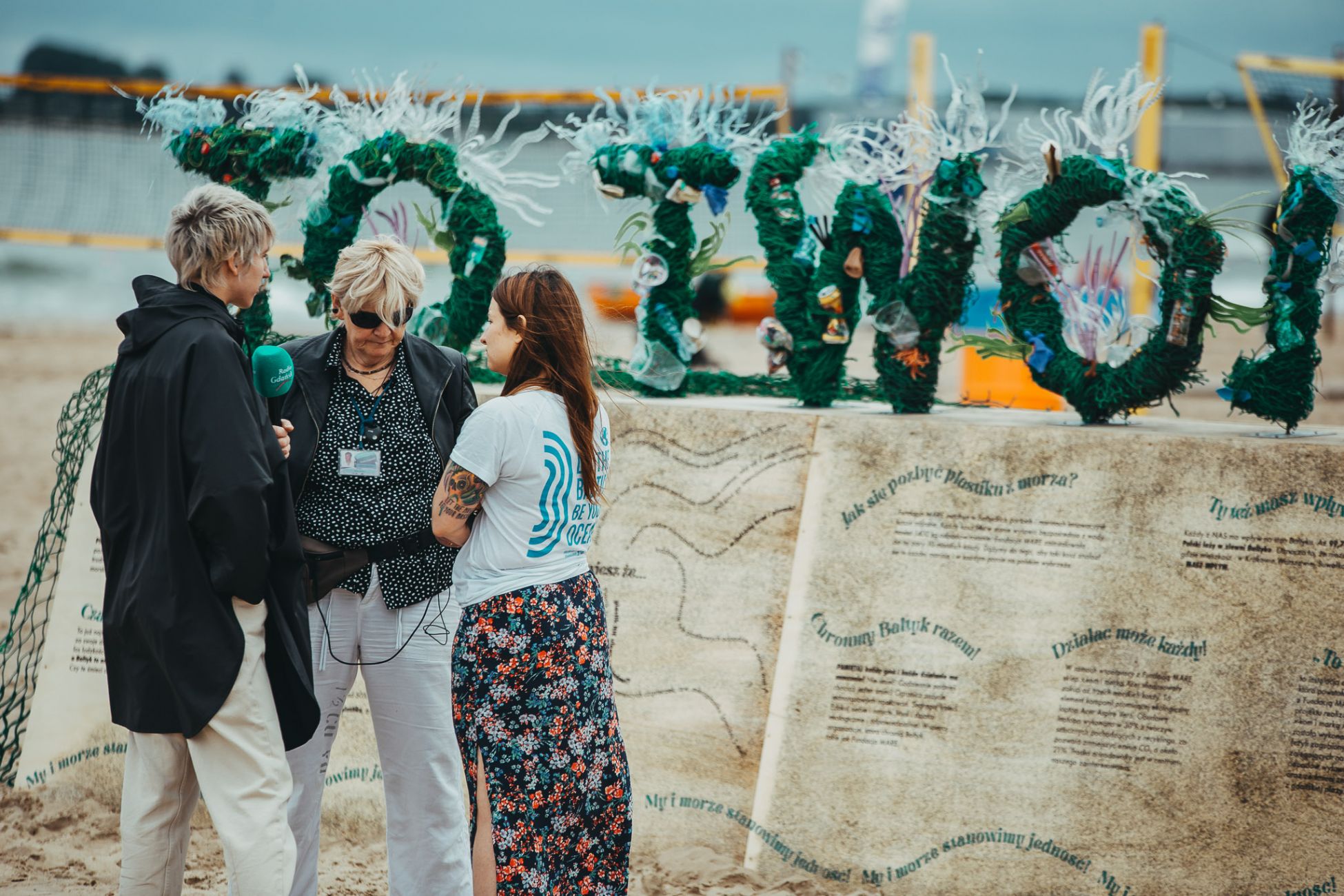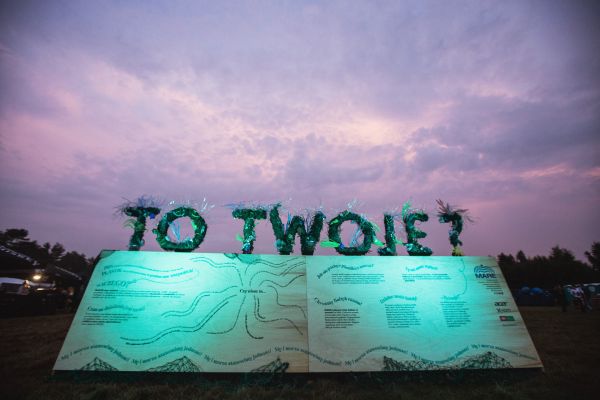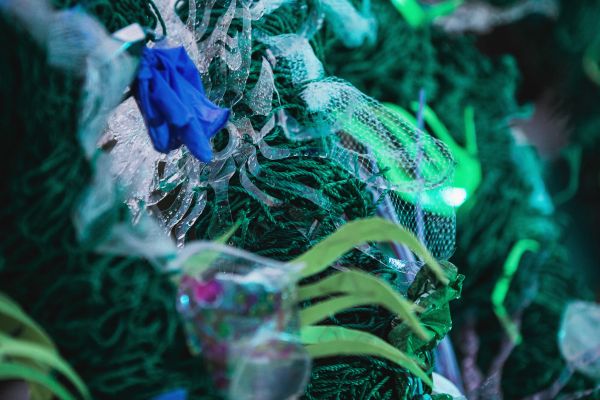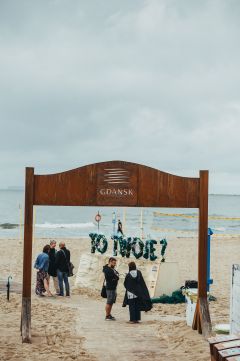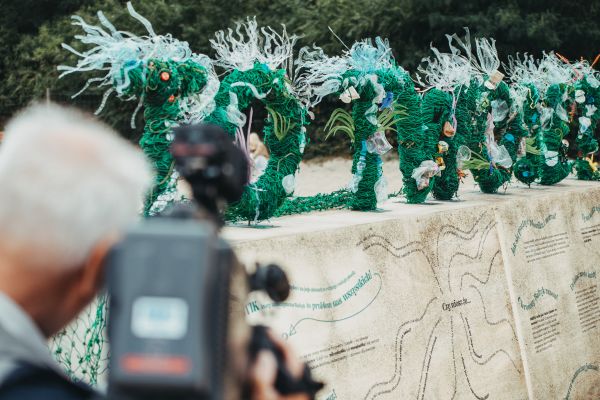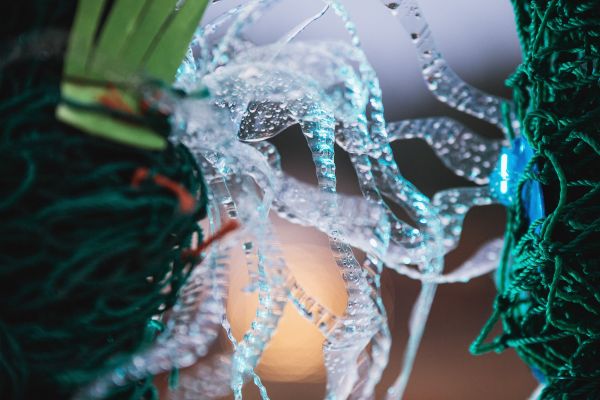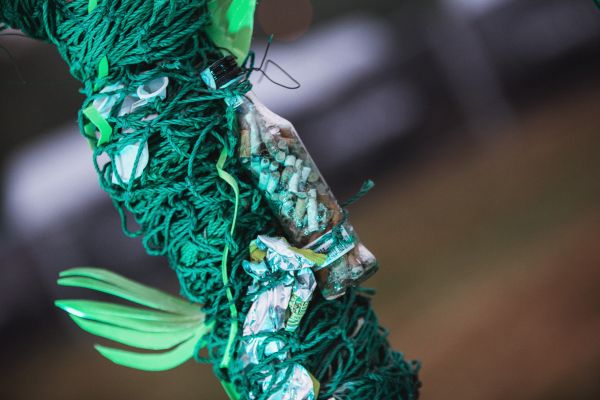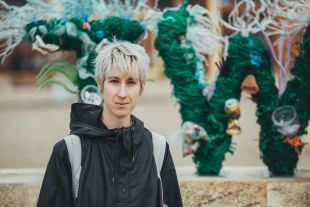Is this yours?
On the initiative of the MARE Foundation, an artistic installation was created on the Gdańsk beach. It was made of old (end-of-life) fishing nets, recovered from the Baltic and from litter collected on the Baltic beaches. The installation called Is this your waste? is to draw attention to the huge problem of pollution of the seas and oceans, including the Baltic with plastic litter. The installation is aimed at educating the society and draw attention to the role played by recycling and upcycling of plastics.
Premiera instalacji "TO TWOJE?" w Gdańsku Brzeźnie.
Is this your waste? Was created by Linda Lemon, in cooperation with the MARE Foundation, in the framework of a project carried out with x-kom store and Acer. The installation is another activity implemented jointly for the benefit of the Baltic Sea. x-kom store and Acer have financed 3 sea bins, installed by the MARE Foundation in the marina in Hel, the Puck port and the marina in Mechelinki. Each bin can collect up to 1,400 kg of waste from water per year.
Sea bins is a project carried out by the MARE Foundation since 2021. So far, the Foundation has installed 10 such bins in the Baltic ports and marinas. Collecting plastic litter directly from the Baltic (before they turn to microplastics and remain forever in the ecosystem) is just the first step in solving the problem. At present, the MARE Foundation is looking for the best solutions to recycle and reuse them.
The installation Is this your waste? Addresses the problem of plastic waste in a symbolic way. The installation can be seen until the end of September 2022 on the Brzezno beach.
Approximately 350 million tonnes of plastic are produced worldwide annually. This is more than the mass of all people living on Earth. Only 9% of the plastic are recycled on a global scale. In the E, the share of the recycled plastic is 32%. This is still not enough, because million tonnes of plastic waste end up in the environment, including the seas and oceans. The problem of plastic pollution can no longer be ignored. Seeking legislative and technological solutions should be prioritise, if we want to secure the future of ecosystems and our health– says Olga Sarna, the chair of the MARE Foundation.
One of the solutions to plastic pollution is circular economy. This concept is based on the idea that the materials from which products are made can be resurrected by entering a second life as recycled content in new products. Thus, the amount of waste is limited to a minimum. In other words, we need to look at the waste as potential raw material, from which we are able to make products. For example, 35 plastic bottles are needed to produce a polar sweatshirt.
Recycling of plastics is not an easy task and still raises many challenges. Glass and aluminium are 100% recyclable and reused an infinite number of times, plastic loses its properties in every recycling process. It is therefore important to use plastic items as long as possible and stop using the disposable items. Moreover, plastics are a very diverse raw materials, which require different processing / recycling. This fact needs to be taken into account in recycling items with different components. In the case of plastics recovered from the sea, in addition to proper sorting into different fractions, it is also necessary to clean them from organic matter.
Plastic recycling technologies are constantly evolving and the range of products made from recycled plastic is also expanding. Recycled plastic is used for the production of toys, window frames, soundproofing screens, furniture, clothing and sport shoes. Recently, the trend of using recycled plastic has also reached the hi-tech industry. An example is the eco-friendly Acer Aspire Vero laptop. The laptop enclosure is made of 30% recycled plastic, which further reduces the CO2 emissions by approx. 21%.
The EU regulations also force changes. In 2020, the European Commission proposed the first package of measures to accelerate the transition to circular economy. The system is, among others, based on the principle that up to 2030 all packaging aims to be fully circular and 55% of waste will be recycled.
Instalation on Brzeźno beach.
Linda Lemon, the author of Is this your waste? (actually Anna Świerczyńska), a graduate of Intermedia at the Academy of Fine Arts in Gdańsk and art education at the Academy of Fine Arts in Łódz, living and working in Sopot. She is inspired by the admiration of the phenomenon of life on Earth and exploration of modern mysticism. Using the language of art, she talks about hydrosphere, the concept of waste and the influence of plants on holistic approach to human beings.
The project is supported by the Sport Centre in Gdańsk, by giving the free space for the installation Is this your waste?
Fot. Piotr Szafran


